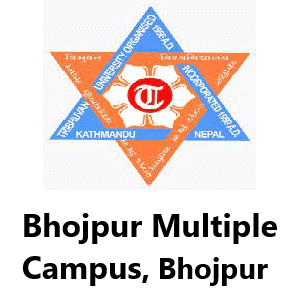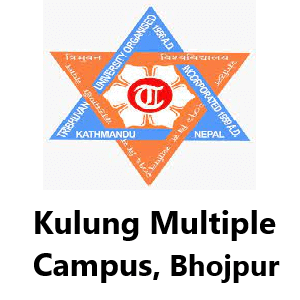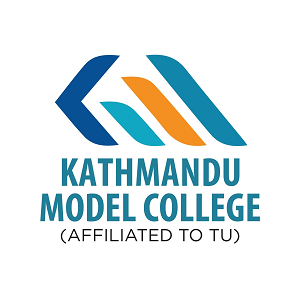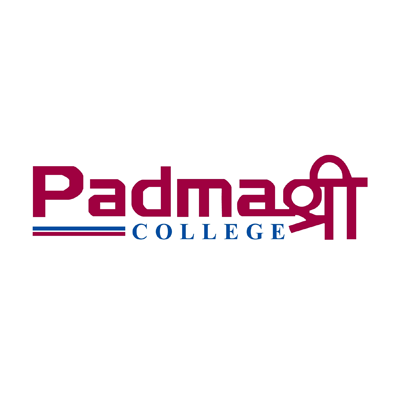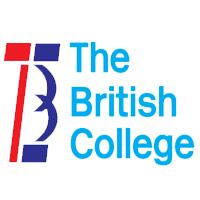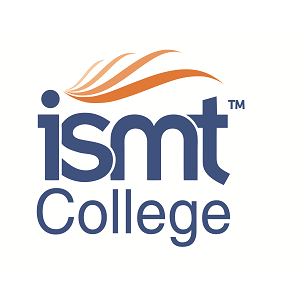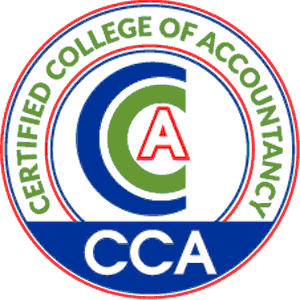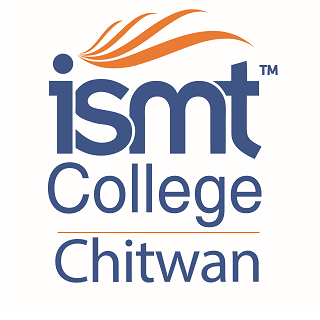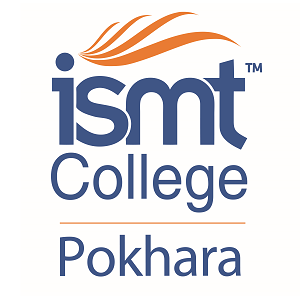Overview
Shadananda Multiple Campus was established in 2010 AD (2067 BS) as a community-based higher educational institution located in Dingla, Bhojpur district of Nepal. It is affiliated with Tribhuvan University (TU) and approved by the University Grants Commission (UGC) of Nepal.
It offers four-year bachelor's degree programs in Management and Education, such as the Bachelor of Business Studies (BBS) and the Bachelor of Education (B.Ed.).
Shadananda Campus offers education at moderate fee structures and provides scholarship schemes for deserving and needy students.
It operates as a community campus named after Balaguru Shadananda, an education reformer who established Nepal's first public school in Dingla and managed it sustainably over time.
The campus currently offers two main academic programs:
-
Four-Year Bachelor of Education (B.Ed.) under the Faculty of Education
-
Four-Year Bachelor of Business Studies (BBS) under the Faculty of Management
It was founded to expand access to quality higher education in the northern parts of Bhojpur, especially among underrepresented groups such as women, Dalits, indigenous communities, and students from marginalized backgrounds.
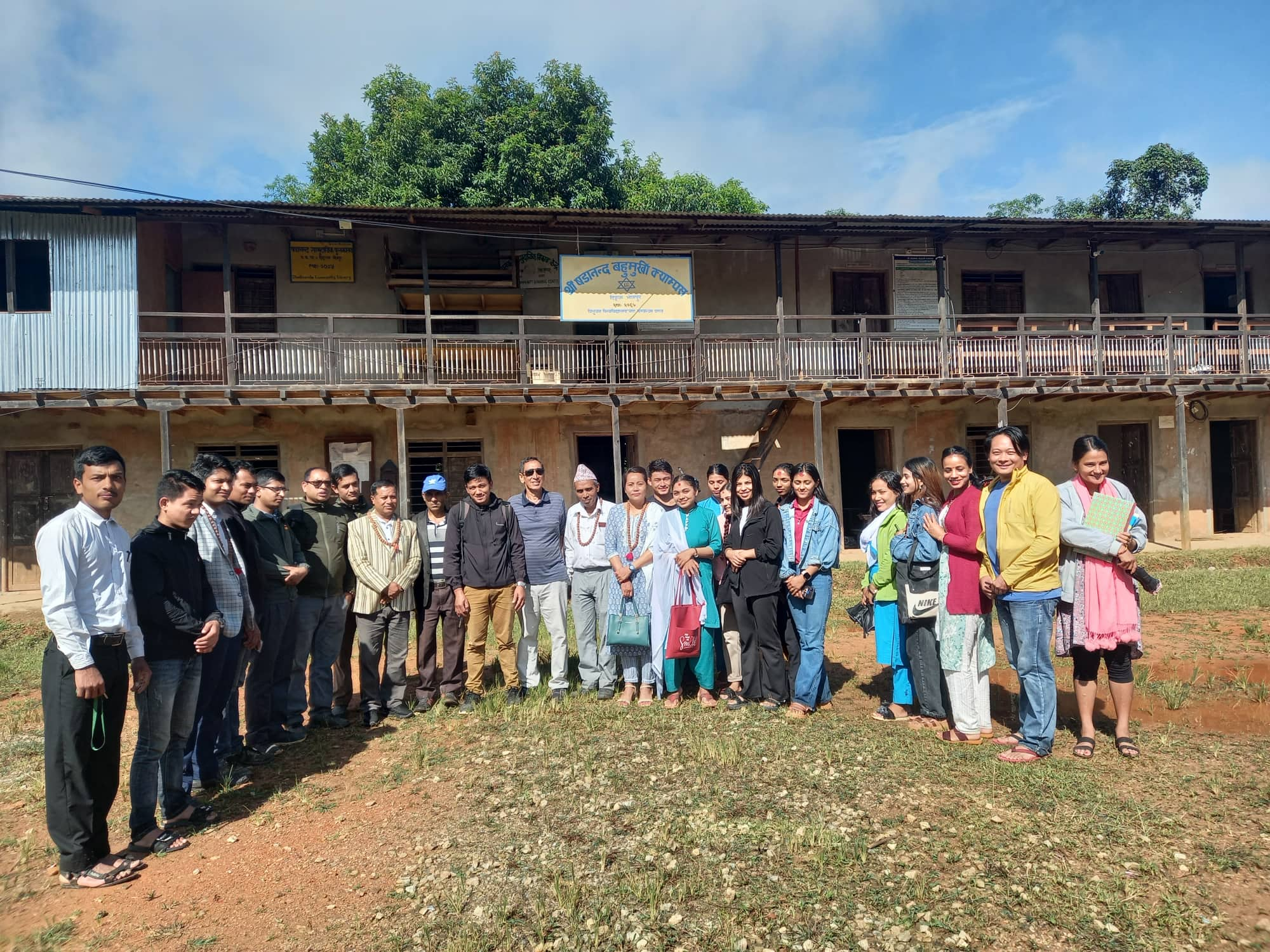
Institutional Registration and Accreditation
-
Registered with the Nepal Public Campus Association in FY 2072
-
Renewed affiliation with Tribhuvan University valid until FY 2080-03-22 for BBS
-
Renewal fees have already been submitted for B.Ed. through Ashadh end 2082 and BBS through 2084
-
Permanent account number (PAN): 619201168, tax clearance certificate obtained for FY 080/81
-
Examination center established on campus since 2075 BS
Academic Expansion and Subject Approval
Initially offering Economics Education and Nepali Education under the B.Ed. program, the campus received approval in FY 074/75 to introduce:
-
English Education
-
Health and Physical Education
-
Population Education
-
Educational Planning and Management
QAA and Grants
-
Letter of Intent (LOI) for Quality Accreditation Assurance (QAA) approved in FY 078/79
-
Equity Grants and Extended Performance-Based Grants approved under NEHEP (University Grants Commission) in FY 079/80
-
Proposal for Digitalization in Higher Education approved in FY 080/81 and currently under implementation
Campus Objectives
-
Operate as a non-profit institution
-
Deliver quality higher education to produce skilled professionals
-
Promote academic research and innovation
-
Preserve and support the local knowledge, skills, and technologies
-
Transfer relevant knowledge and technologies to the community to develop competent human resources
Vision
To become a prosperous academic institution, it is essential to ensure access to quality higher education.
Mission
Shadananda Multiple Campus will be recognized as a premier academic institution for learning, research, and innovation within its community.
Goal
To strengthen financial sustainability, upgrade physical infrastructure, and create a supportive academic environment that promotes quality learning.
Academic Progress
Programs
The campus operates undergraduate programs under the Faculty of Education and the Faculty of Management. Detailed information about each program is listed below:
Program Details at Shadananda Multiple Campus
Faculty: Management
-
Four-Year BBS
-
Affiliation Date: 2067-04-27
-
Affiliated University: Tribhuvan University
-
Elective subjects in fourth year: Marketing or Finance
-
Renewal valid until FY 2084 (fees paid up to this period)
Faculty: Education
2. Four-Year B.Ed
-
Affiliation Date: 2069-04-23
-
Affiliated University: Tribhuvan University
-
Subjects: Nepali, English, Economics, Health and Physical Education, Population Education, Educational Planning and Management (EPM)
-
Renewal valid until FY 2082 Ashadh end (fees paid)
Educational Pedagogy
The campus adopts a variety of instructional methods, including lectures, note-based teaching, project assignments, demonstrations, discussions, question-and-answer sessions, bullet-point summaries, and research-based methods.
From this academic year, teachers are required to prepare lesson plans for every class. A Microsoft Teams ID has also been created to support alternative teaching methods.
Subjects Taught in the Management Faculty
For the academic year 081/82, a total of 62 subjects are being conducted (42 under Education, 20 under Management). Below is the subject-wise breakdown for the BBS program:
Subjects for Four-Year BBS Program:
-
BBS Year 1: MGT 201, MGT 202, MGT 205, MGT 206 (4 subjects)
-
BBS Year 2: MGT 207, MGT 211, MGT 213 (3 subjects)
-
BBS Year 3: MGT 204, MGT 214, MGT 220, MGT 221 (4 subjects)
-
BBS Year 4: MGT 401, MKT C.I, MKT C.II, MKT C.III, MGT 212, MGT 217, FIM 215, MGT 224, MGT 223, MGT 226 (9 subjects)
-
Total: 20 subjects
Subjects for Four-Year B.Ed Program
The B.Ed program covers major subjects including Nepali, English, Economics, Population, Educational Planning and Management (EPM), and Health and Physical Education. Each year consists of a specific combination of compulsory and major subjects.
-
Year 1: Total 10 subjects
-
Year 2: Total 12 subjects
-
Year 3: Total 11 subjects
-
Year 4: Total 11 subjects
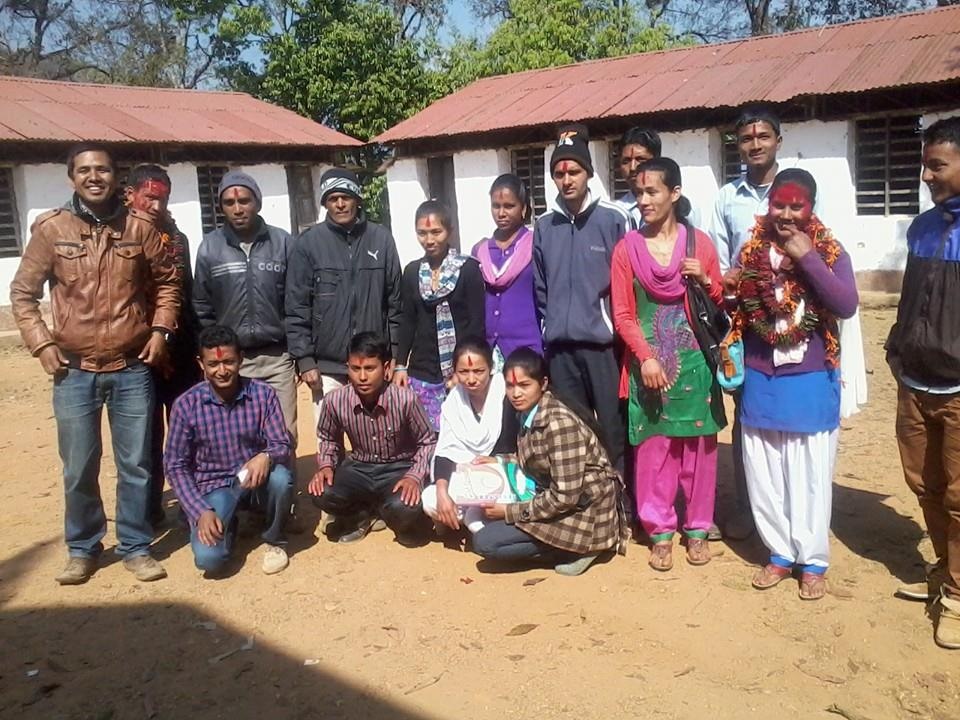
Physical Progress
Infrastructure Overview
Building 1:
Two-story main building with 6 rooms, covering 88426 sq. ft. Window shutters and painting work are pending. The top floor has a ceiling and carpeting. A library room has been fully completed with space for 30 students to study at once.
Building 2:
A two-room building (48×17 sq. ft.) adjacent to the main building. The roof and veranda are incomplete. Due to a lack of roofing, window frames on the ground floor are unprotected.
Construction was initiated under the Peace and Development Program of the Ministry of Peace, but the project stalled following a restructuring. In FY 074/75, NPR 800,000 from Shadananda Municipality funded further construction, including ceiling slab and window installation. The ground floor is in use for classrooms; the upper story and veranda remain pending.
Building 3:
Located in Tungechha, this two-story, four-room building (62×22 sq. ft.) was funded by the Constituency Development Program during Minister Kripasur Sherpa’s term.
Due to delayed work, NPR 1.5 million was frozen. In FY 074/75, Shadananda Municipality allocated NPR 1.45 million for additional construction. The building still requires plastering, window and door fittings, and finishing.
Building 4:
A 65×25 sq. ft. structure funded by NPR 5 million from the University Grants Commission in FY 076/77. The contract process was completed through an e-bidding system. However, due to delays, only the DPC (Damp Proof Course) was completed, and NPR 2.5 million remained unused.
In FY 078/79, NPR 5 million was again allocated by the Commission, with an additional NPR 2.1 million from the Municipality. Construction was contracted to Baitar Construction and completed in FY 079/80.
Although budgeted at NPR 7.3 million, the contract was issued for a lower amount. Irregularities were reported to the Commission for Investigation of Abuse of Authority.
Building 5:
A five-room building constructed under NPR 1 million grant from Province No. 1’s Ministry of Social Development during FY 078/79.
Flooring, plastering, veranda, window shutters, and ceiling work remain incomplete. Complaints of irregularities and a non-operational library were submitted to the Commission.
Building 6:
A two-story building funded by NPR 5 million from the Koshi Province Urban Development Office. First-floor slab completed in FY 079/80. Construction continued through FY 080/81 and 081/82.
The building has 8 rooms. A total of 20 classrooms are required to accommodate all programs. Due to a shortage, classes are also run in partitioned library and hallway spaces.
Infrastructural Development
Educational Equipment (ICT, Lab Equipment)
The campus currently owns:
-
2 laptops
-
14 desktop computers
-
2 projectors
4 printers (Canon 2900, Brother DCP 2550, Epson 805, Canon 1310) Of these, 1 laptop, 2 desktops, and 1 projector were purchased through UGC grants. In FY 075/76, 9 desktops and tables were acquired through the ICT Management Program under the Province 1 Ministry of Social Development, Education Directorate, Dhankuta.
These devices are installed in a carpeted and wired classroom. In FY 076/77, the University Grants Commission provided NPR 200,000 for equipment procurement. Additional funding from Province 1 enabled the purchase of 8 batteries and an inverter.
With NPR 226,000, the campus also installed campus management software, a website, and an e-attendance system. The Shadananda Municipality donated one laptop.
The campus shares a digital library server developed by Oli Nepal with e-learning materials, books, journals, and educational videos by Khan Academy. It is accessible through both mobile and desktop platforms. A hybrid solar system (2 solar panels of 150W each and 2 batteries) was installed to support 24-hour e-library access. The system is currently inactive due to inverter malfunction.
Currently, 3 classrooms are wired for ICT-supported teaching. Rooms in Buildings 2 and 5 are yet to be wired. In FY 080/81, 2 smartboards were installed through grants provided via Shadananda Municipality.
Books, Journals, and Reference Materials
The campus library has recorded a total of 3,307 books.
The collection includes:
-
267 books in English
-
730 books in Nepali
-
2 books in Sanskrit
-
2 books in Hindi
The library room accommodates up to 30 students at a time. It is equipped with carpeting and proper electrical wiring. In FY 076/77, two double racks and three single-sided racks were added. Books are categorized and shelved according to the Dewey Decimal Classification (DDC) system.
However, there are still some limitations in automating the library due to the lack of trained staff, barcode reader machines, and high-speed internet access. At the end of FY 079/80, the University Grants Commission provided a grant of NPR 500,000, which was used to purchase additional books.
Library Management Improvements
Since FY 076/77, books in the library have been systematically recorded using the PMB library software. The campus has initiated the move away from manual ledger-based transactions.
Through the Online Public Access Catalogue (OPAC), users can now search the library’s catalog from any location via the internet. This allows students and faculty to verify the availability of a particular book without visiting the library in person.
All books have spine labels and are arranged according to the Dewey Decimal Classification system, which makes it easier to locate required reading materials promptly.
The campus library’s OPAC link is hosted on its website and can be accessed via:
OPAC Link: nepaknol.org.np/bhojpur/pmb/opac_css/index.php?database=bhojpur
Contact Shadananda Multiple Campus's administrative office for detailed information on the course, admissions, location, fees, scholarships, facilities, counseling, or eligibility.


